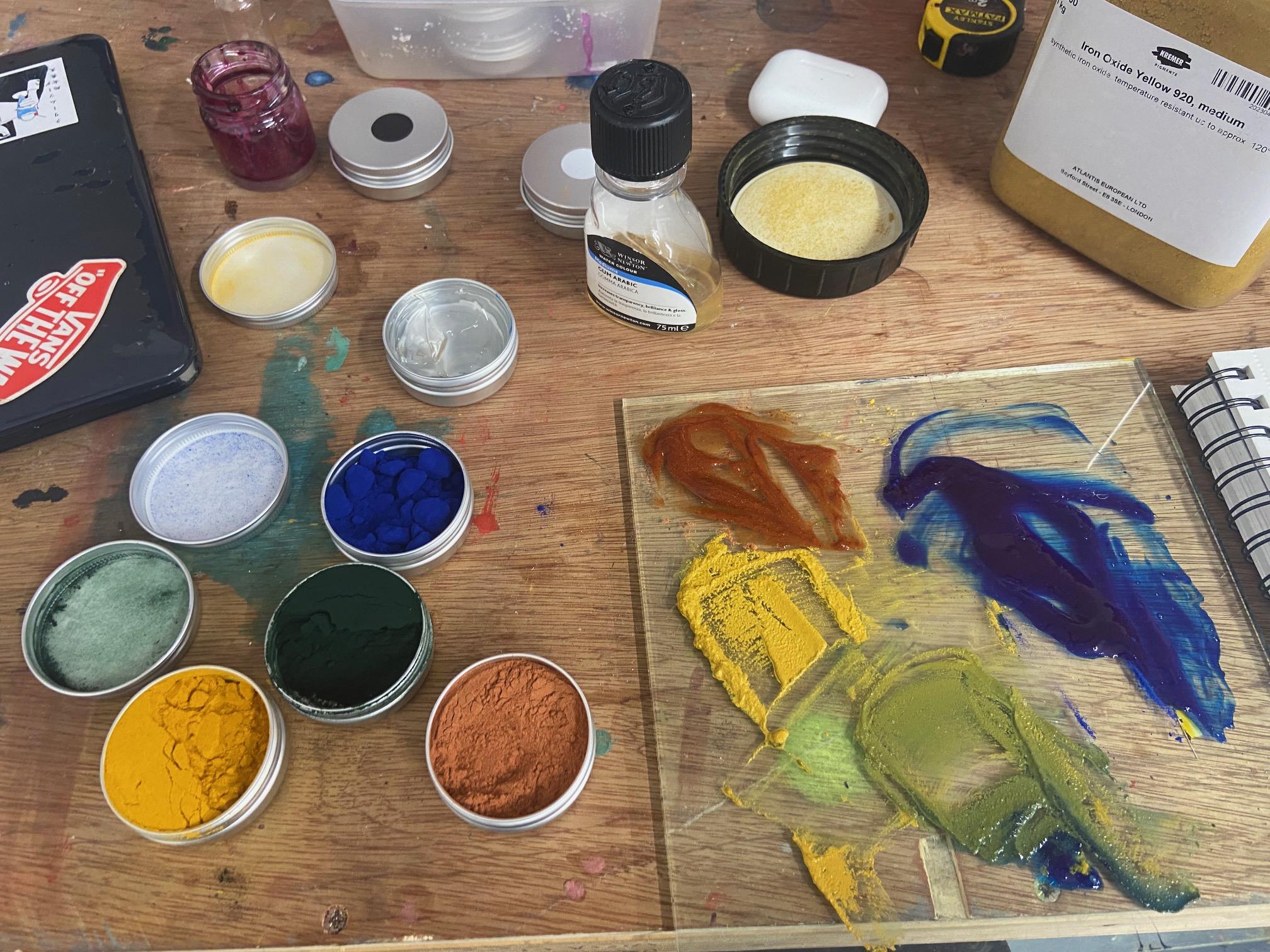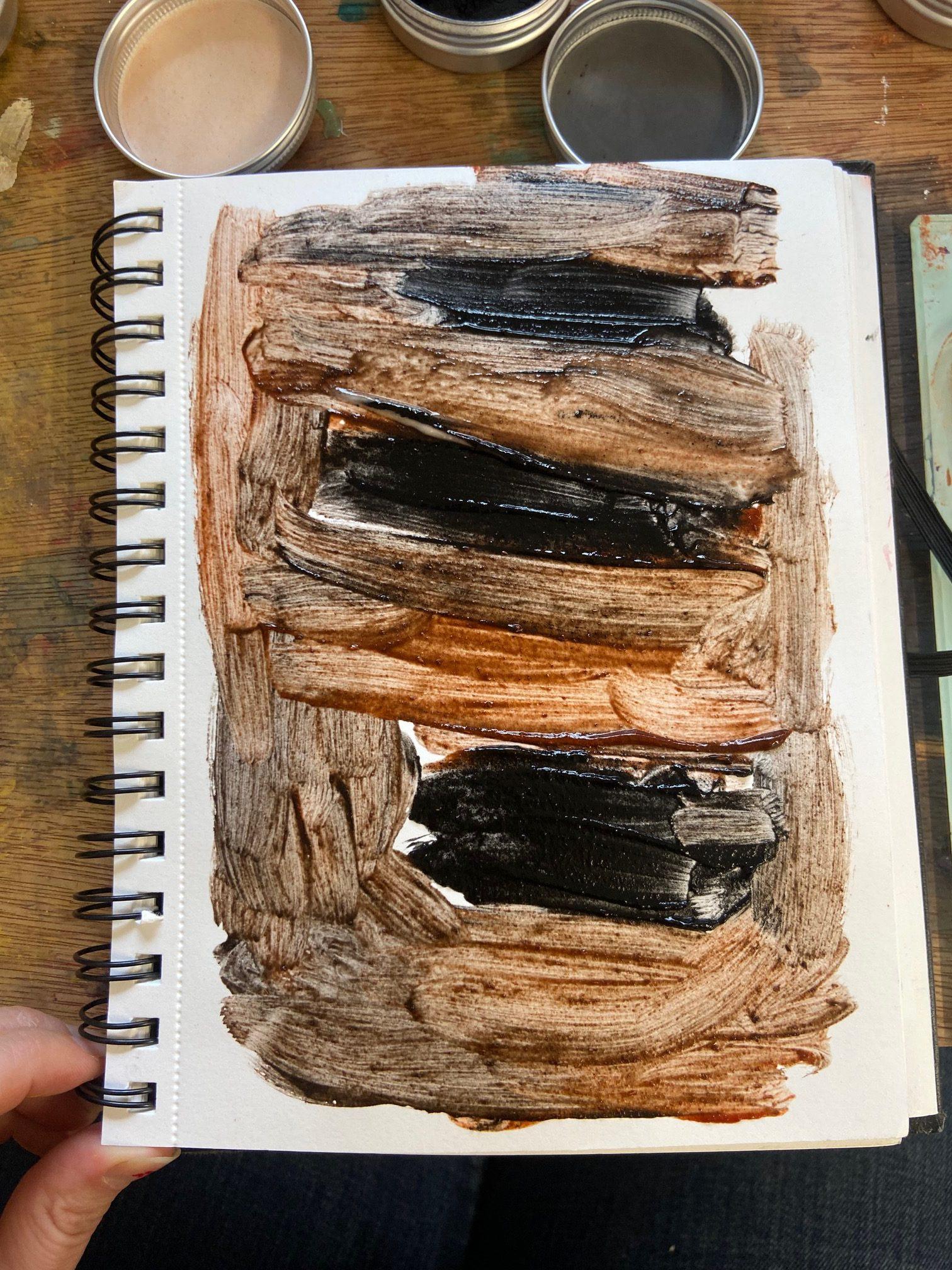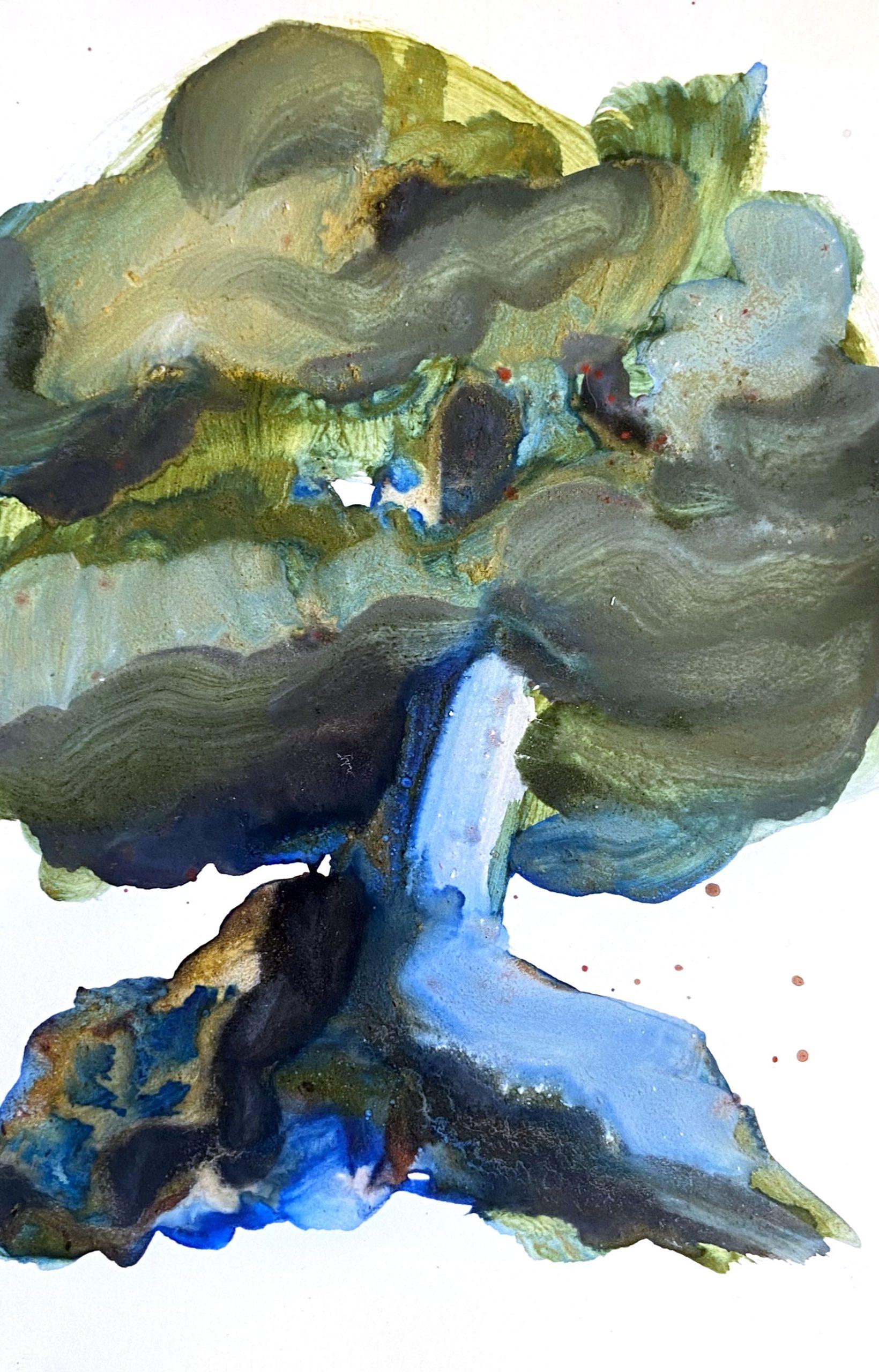
Part of my DYCP research is to find and test existing ‘sustainable’ paints and when I came across Placrylic, I immediately purchased their starter set, excited by the idea of plant-based sustainable acrylics. I admit, however, that I didn’t look too deeply at the website- I just kind of went for it. Yep, looks great, let’s try it. It was only after receiving the kit that I returned to the website with some questions, but was left a bit disappointed with the lack of answers. The kit comes with a set of six dry pigments and two tins of gel medium per colour:
- 60ml Placrylic Sustainable Eco Yellow Paint
- 60ml Placrylic™ Sustainable Eco Blue Paint
- 60ml Placrylic™ Sustainable Eco Green Paint
- 60ml Placrylic™ Sustainable Eco Black Paint
- 60ml Placrylic™ Sustainable Eco White Paint
- 9 x 30ml cans of Sustainable plant-based gel medium
As you can see from the images- looks good in impasto, but is very translucent when spread and doesn’t blend particularly well. The white is completely transparent while painting but did appear to get bolder as it dried.
My first question was what were the sources of pigment, because the blue and green, for example, smelled like spirulina. The yellow smelled like turmeric, the red I guessed to be onion skin. I guess I found this a little disappointing because these are fairly accessible, yet the Placrylic founder claims to have “studied thousands of plants…” I don’t know, maybe that’s true, but the lack of labelling left me a little frustrated. I think in the ethics of sustainability- it should be more transparent where the pigments are derived from. I understand that if you’re trying to trademark a product you want to keep some things close to your chest- but most pigments can be traced their original source. If the blue is actually spirulina, my main concern is lightfastness because on the Kremer pigment website, it states: “The Spirulina Blue (also called Phycocyanin) Pigment extracted from the algae Spirulina is very luminous, but not lightfast pigment. After around 4 weeks in the sun it is almost completely bleached out.” I also have a hard time believing turmeric is the BEST plant-based yellow pigment, but nevermind.
Placrylic claims that its eight sustainable pigments “when combined with the patented plant gel formulation, produce eight natural yet vibrant colours with excellent lightfastness.” If this is the case, please validate by disclosing the source of the pigments.
I think I’m more interested in the gel medium. It smelled soapy, so I’m guessing there’s glycerin is in there. Curious what else is in the medium to hold the gel paste and assist lightfastness. The gel did mix really well with the blue and green, but not so well with the yellow, which was left transparent and grainy. Felt like what you would imagine painting with turmeric would feel like. I did use it with other pigments like iron oxide, chalk dust, and madder lake and it blended well with these. It did have a pleasant feel to paint with- however I don’t know about detail work. I didn’t get too meticulous with it. I paint very fluid, so if that’s your jam- then it works. Because my palette is a swamp of stuff- I think it may have mixed with gum arabic and water- all of which worked out itself out fine on paper, in my opinion.
(The white in these two paintings was from my own chalk dust- not ‘placrylic’ white.)
I’m interested to hear from other artists using Placrylic what they make of the kits and if they find it to be a workable substitution to traditional petroleum-based acrylics. I think it comes with the territory to to be open to changes in how one works if they are trying to be more sustainable/regenerative in their practice. Changing size, scale, sources is all to be considered- so I am trying to be open to new ways of making; new ideas of what feels right, but I’m not sure this is quite there yet for me. I’ll keep experimenting and will be keeping an eye on how these paintings age over time as well as how the company develops.






